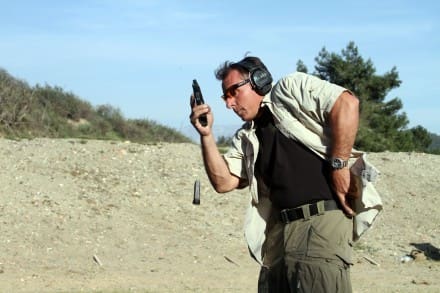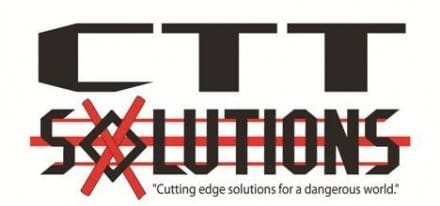First and second focal plane and misdeeds in the punchbowl!
I hope you already got a cup because I might be pissing in your punchbowl.
Front focal plane/first focal plane (from now on referred to as FFP) refers to the reticle being in front of the magnification on a variable power optic. This means as the power of magnification is increased, the reticle size increases proportionately. This is extremely advantageous on higher variable power optics with maximum magnification 10X or greater. The benefit is that the reticle retains its true calibration regardless of magnification. This allows the shooter to use the optimal magnification setting for range estimation and holds given the circumstance and have a true MOA/mRad scale.
Rear focal plane/second focal plane (from now on referred to as RFP) refers to the reticle being behind the magnification on a variable power optic and that means as the power of magnification is increased the reticle size remains constant. The reticle is only truly calibrated at the maximum magnification. This is advantageous specifically on low power optics (those starting between 1-1.5X variable to 4-8X) because the reticle is much more clearly visible at the minimum magnification and ranging is overwhelmingly (in my case always) done at the max magnification.
At 1X with an FFP optic, the reticle is very small and in low light very difficult to see so you NEED an illuminated reticle or dot. If the illumination fails for some reason you are bound to mount the rifle and really need to see some aiming reference (think short range engagement) and barely be able to see anything in the tube. Even in broad daylight an FFP reticle at 1x is hard to use rapidly due to the size of the reticle at the lowest magnification setting and the calibration is really meaningless in the midrange powers (1-4) as the hash marks are hard to see at those powers. Let’s use for instance a 1-8X variable power FFP scope. It is designed for the reticle size to be optimized at 8X. That means at 1X it is 1/8th the optimal size.
For the reasons stated above, I am not a fan right now of FFP on low power optics (last few sentences will explain so read on please!). Low power optics, again those starting between 1-1.5X and variable to 4-8X are better suited in RFP so the reticle is consistent and optimally sized at the lowest to highest magnification setting in case the dot/battery fails. I take that position from experience with both military and sport application in day and low-light/night use. Also, you are not going to range someone/something at anything under 200m with any setting but full power when you only have 4-8X considering the guns (5.56 and.308) shoot as flat as they do. With a 50, 100 or 200m zero your max point blank range, the distance where the bullet does not go above or below your height over bore for most AR based military carbine and sport carbine applications, you can hold center on an 8” target (plate or cranium) and get an effective hit out to 250 in 5.56 with standard sight height and 50 or 200m zero and out to 200m with a 100m zero (with non-SBR barrel lengths and based on a 16” gun with 55 grain M193). You can estimate close enough at fewer than 200m for a minor hold as not to need an FFP in my professional and operational experience. It is also more expensive and less functional for a combat or sport optic and is outperformed by the larger and optimized SFP reticle size with or without illumination. It is a capability without a requirement for low power optics. I see the benefit as negligible and the down-side distinct based on the profile of application of a low power variable magnification optic for combative and sport use.
Caveat- If you want an FFP low power optic then it needs illumination with extreme battery life/durability like an Aimpoint … and if Aimpoint can do it than the others can as well. I’d sign on to that but until then I’ll remain an advocate of rear focal plane variable power combat/sport optics in the 1-1.5X to 4-8X range of magnification. They dramatically increase the reach of any rifle yet still afford the close range speed and reliability of a reticle that is scale optimized and usable even without magnification.
– Mike Pannone
Mike Pannone retired from the Army’s premier assault force (1st SFOD-D) after an explosive breaching injury. A year after his retirement America was attacked on 9/11 and he returned to help serve his country as the head marksmanship instructor at the Federal Air Marshals training course and then moved to help stand up the FAMS Seattle field office. In 2003 he left the FAMS to serve as a PSD detail member and then a detail leader for the State Department during 2003 and 2004 in Baghdad and Tikrit.
In 2005 he served as a ground combat advisor of the Joint Counter IED Task Force and participated on combat operations with various units in Al Anbar province. Upon returning he gave IED awareness briefings to departing units and helped stand up a pre-Iraq surge rifle course with the Asymmetric Warfare Group as a lead instructor. With that experience as well as a career of special operations service in Marine Reconnaissance, Army Special Forces and JSOC to draw from he moved to the private sector teaching planning, leadership, marksmanship and tactics as well as authoring and co-authoring several books such as The M4 Handbook, AK Handbook and Tactical Pistol shooting. Mike also consults for several major rifle and accessory manufacturers to help them field the best possible equipment to the warfighter, law enforcement officer and upstanding civilian end user. He is considered a subject matter expert on the AR based Stoner platform in all its derivatives.
Gunfighter Moment is a weekly feature brought to you by Alias Training & Security Services. Each week Alias brings us a different Trainer and in turn they offer some words of wisdom.
Tags: Alias Training and Security Services, CTT Solutions, Mike Pannone




That’s about as good as it gets. Eric/Mike, I would like to add this discussion on my site as I’m in complete agreement and have been since shooting my first FFP optic.
So question. Just to make sure I’m understanding correctly. The magnifier goes behind the eo tech or aim point? Or is this for optics that are for distance shooting? Or am I just a are up like a soup sandwich. Playing with a football bat while thumb jacking my dirt box!?!
The piece is addressing variable power magnified optics, not add-on magnifiers. I use Front and Rear Focal plane as the preferred terms so people can easily identify that the reticle is either in front of the magnifier (Front Focal Plane) so it is magnified with the target or behind the magnifier (Rear Focal Plane) so the reticle is not magnified with the target and stays the same size regardless of magnification.
Mike,
What do you think about the SWFA FFP scopes where the low mag 1x reticle (illuminated) is designed to look and act like the circle – dot of an eotech, but on magnification to 6x the fine detail of the reticle becomes evident and one can make use of the mrad subtensions. If your main concern is that the FFP reticle is unusable at low mag then does designing it so that the low mag view can be used in a range appropriate way help?